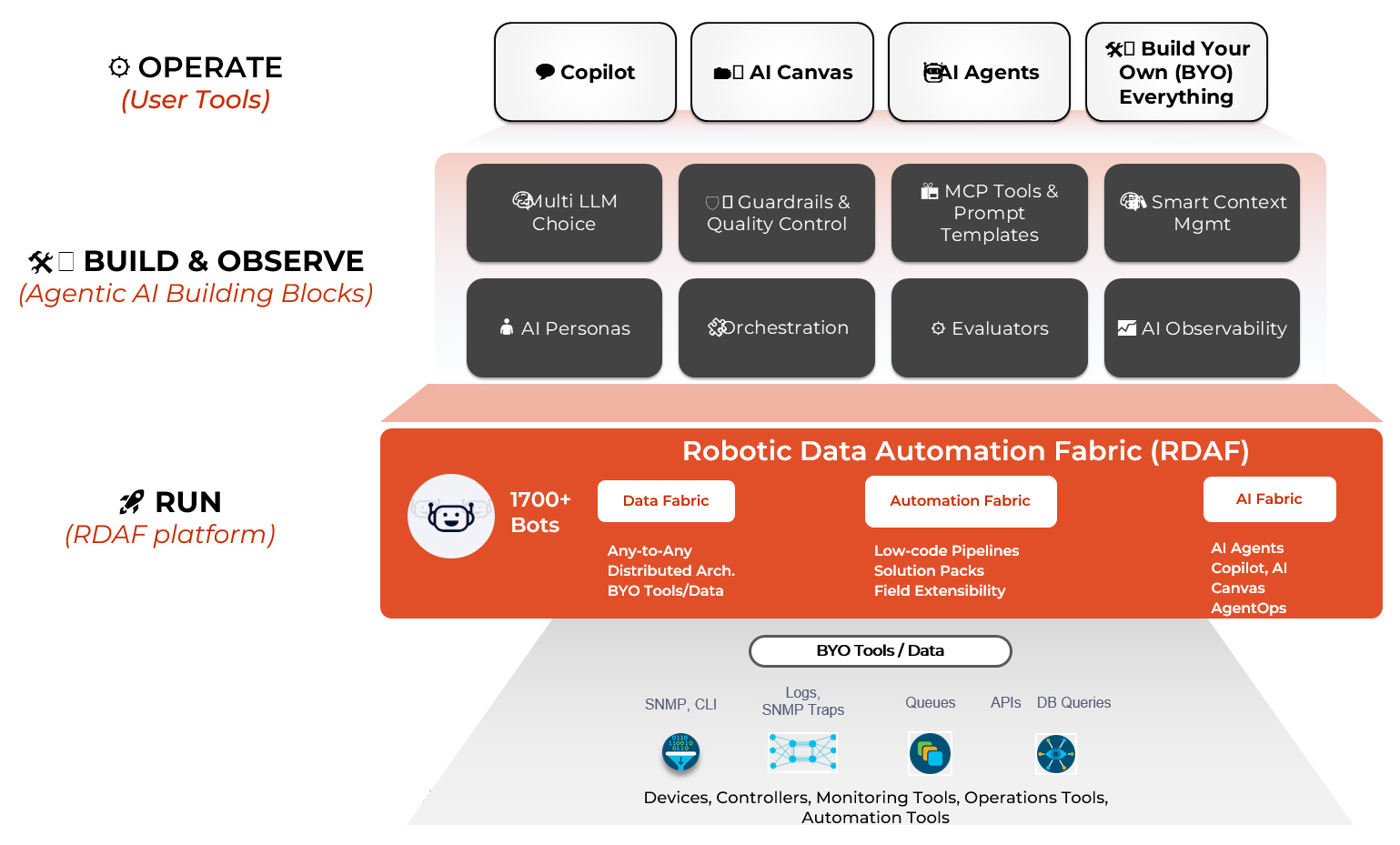Leading Agentic AI Platform
for Autonomous Operations
Blogs & Articles
Implementing Agentic AI: A Technical Overview of Architecture and Frameworks
Fabrix.ai Successfully Concludes First of Its Kind Agentic AI Demo Day and Joins AGNTCY Collective
Fabrix.ai Demo Day Showcases Agentic Platform and AGNTCY Collective Ecosystem Alliance
Some of the open source standards used with AI agents or agentic frameworks
Media Coverage
Fabrix.ai: Bringing Agentic AI to IT Operations and Observability
By Bob Laliberte
AgentOps: Operationalizing Agentic AI
Shailesh Manjrekar
Fabrix.ai brings fresh take on agentic AI operational intelligence
The Evolution From AIOps To AgentOps: Agentic Operational Intelligence Platform
Looking At The Crystal Ball: 2025 Predictions For Agentic AI
Agentic AI Makes Autonomous Enterprises A Reality
GenAI For AIOps Catapults Digital Transformation In Healthcare
Videos
Innovation never stops at Fabrix.ai!
Agentic AI Operational Platform - Product Demo | Shailesh Manjrekar
Enterprise Grade Agentic AI Platform
Build, Operate, and Observe AI agents purpose-built for IT Operations—end to end, in one platform.

- Multi-LLM Choice — on-prem or cloud. Nvidia-ready
- Guardrails & Data Privacy — block unsafe AI interaction with any of Llama Guard, NVIDIA Nemo Guardrail, IBM Granite Guardian .., PII redaction
- MCP Tools — built-in MCP server; adapters to data/actions. Easily add new tools with no-code
- Prompt Templates — UI-editable LLM instructions to process data and produce desired outcomes
- AI Personas — RBAC for models, tools, prompts
- Smart Context Mgmt — caching/retrieval for large datasets; token & latency savings
- Orchestration — no-code workflows with conditions, approvals, retries, rollback
- AI Observability — traces, tokens, cost, quality, accuracy and coherency metrics for every run
- RDAF Platform: Proven microservices Operational Intelligence fabric unifying Data, Automation, and AI
AIOps to Agentic AIOps
Capability
Traditional AIOps
Agentic AIOps (Next-Gen)
Why Fabrix.ai Agentic Platform?
Challenge
Fabrix.ai Solution
AI Personas & Use Cases
The platform provides certain workflows for operational personas, but can be adapted to any personas and agentic workflows.

Agents Built for Every Ops Use Case

Fabrix.ai: Bringing Agentic AI to IT Operations and Observability
Fabrix.ai aims to close that gap with its Agentic AI–driven operational intelligence platform. In a recent discussion, Shailesh Manjrekar, Chief AI and Marketing Officer at Fabrix.ai, outlined how the company’s approach, built on data fabrics, intelligent agents, and low-code operations, seeks to transform IT operations by combining reasoning and action with enterprise-grade guardrails.
Quick Start
How to Get Started with Fabrix AI Agents
Select your preferred AI deployment model:
- Cloud-based LLMs: Use OpenAI, Anthropic, or other public APIs. Ideal for agility and ease of access.
- On-premise / Self-hosted LLMs: Deploy open-source models (e.g., LLaMA, Mistral) within your secure infrastructure. Best for data sovereignty, compliance, or low-latency edge scenarios.
- Fabrix.ai supports hybrid and multi-LLM architectures.
Fabrix.ai Professional Services offers:
Need support with private LLM hosting or advanced agent configuration?
- Infrastructure setup for private LLMs
- Agent deployment and orchestration guidance
- Integration with observability and NOC environments
Accelerate deployment using pre-built agents for common telecom and enterprise use cases:
- RCA Agent: Performs automated root cause analysis across network and IT domains
- Anomaly Detection Agent: Identifies behavioral anomalies in KPIs, metrics, or events using AI/ML
- Service Migration Agent: Assists in migrating services from legacy to modern platforms (e.g., MPLS to SD-WAN, 3G to 5G) with dependency mapping, risk detection, and rollback planning
Custom agents allow you to embed Fabrix.ai intelligence into your unique workflows.
Steps to Build:
- Choose a template (e.g., RCA, Migration, Compliance, Detection)
- Define the goal or operational intent of the agent
- Use the prompt builder to shape LLM responses and behavior
- Attach relevant data sources, telemetry, and thresholds
- Configure constraints, escalation logic, or feedback loops
Fabrix.ai includes a powerful MCP (Model Context Protocol) server that exposes:
- Data pipelines and enriched telemetry
- Automation workflows and runbooks
This allows external agents, tools, or orchestration layers to seamlessly access and interact with Fabrix.ai’s real-time intelligence. Additionally, Fabrix.ai agents can:
- Discover and collaborate with other Fabrix.ai or third-party agents
- Participate in multi-agent workflows across network, app, and service domains
- This enables powerful, scalable, and decentralized decision-making across the enterprise or service provider ecosystem.
Launch your agent in a target environment (NOC, service domain, pilot region)
- Test with synthetic or historical data
- Use the explainability layer to observe how decisions are made
- Iterate on prompts, thresholds, or workflows based on real-time performance
- Agents can run autonomously or with approval workflows in place for sensitive actions.
















